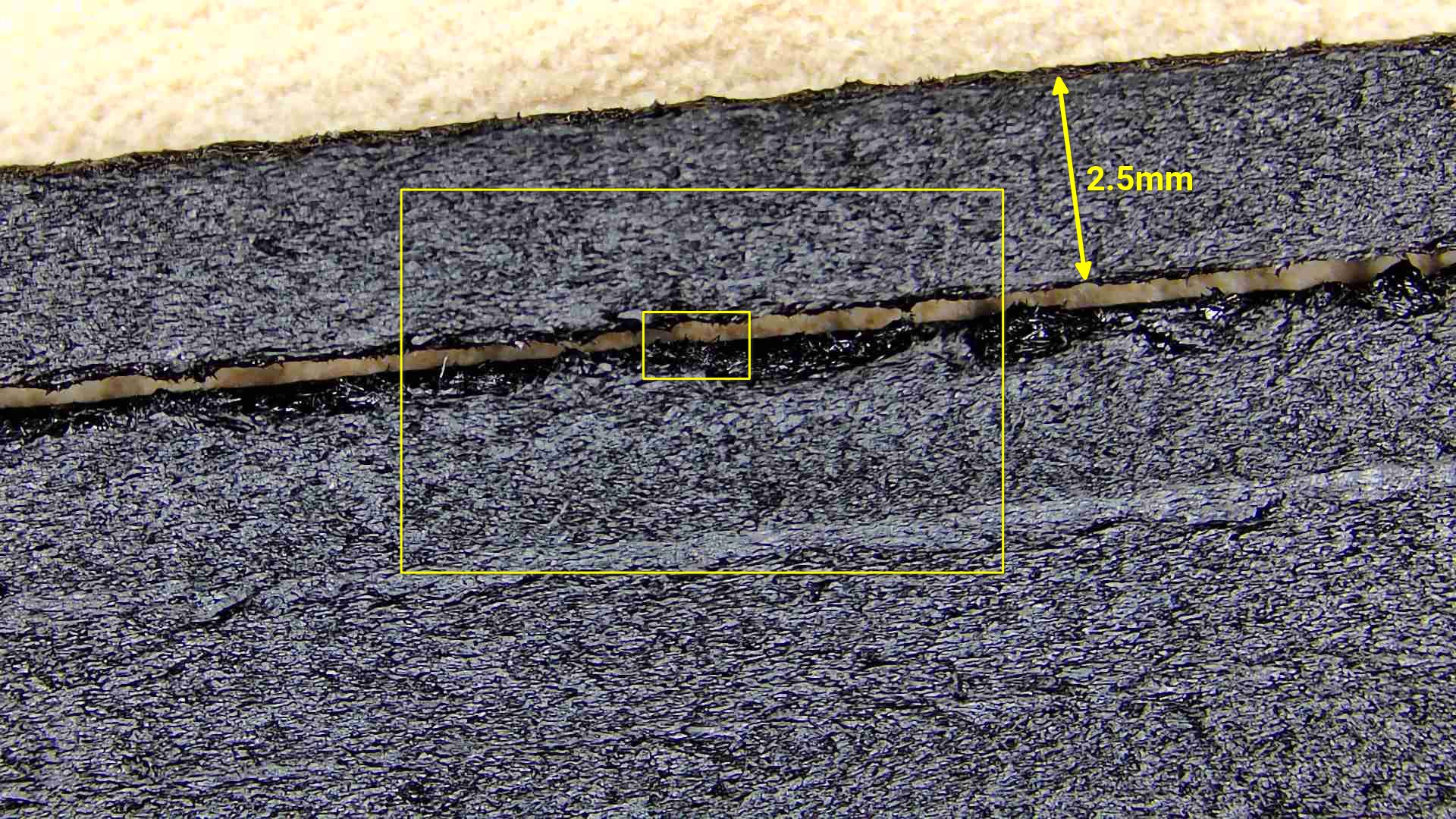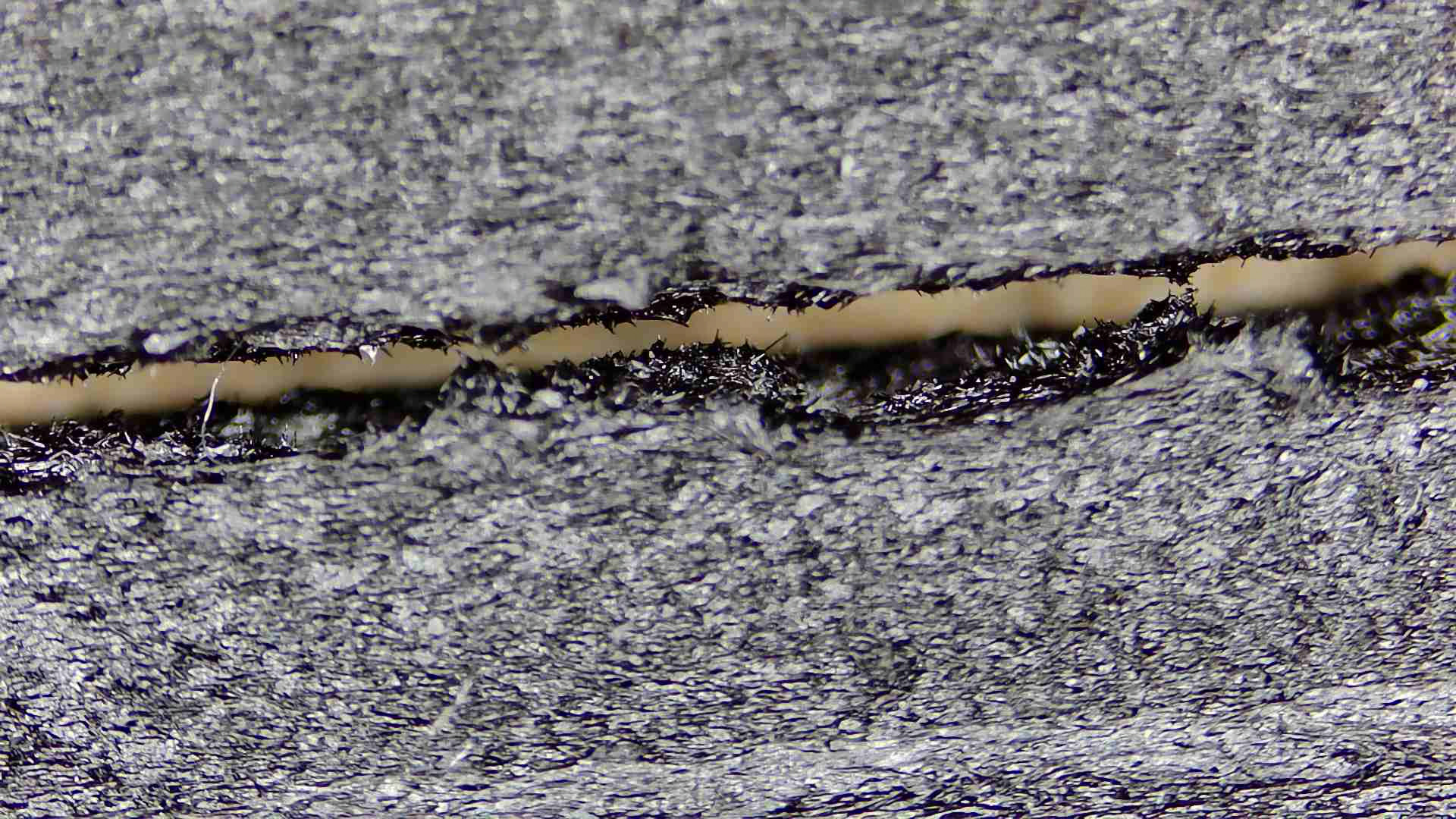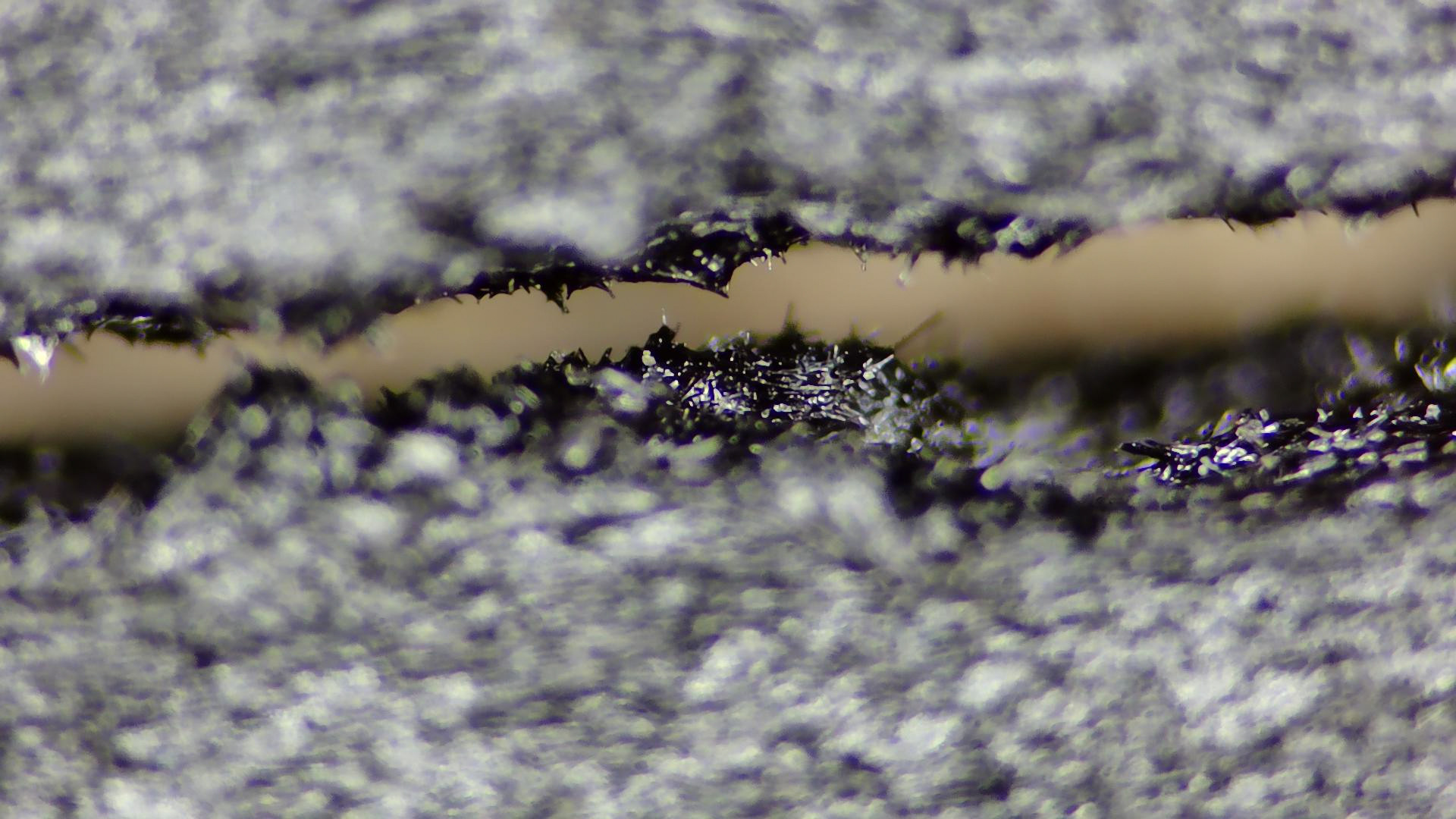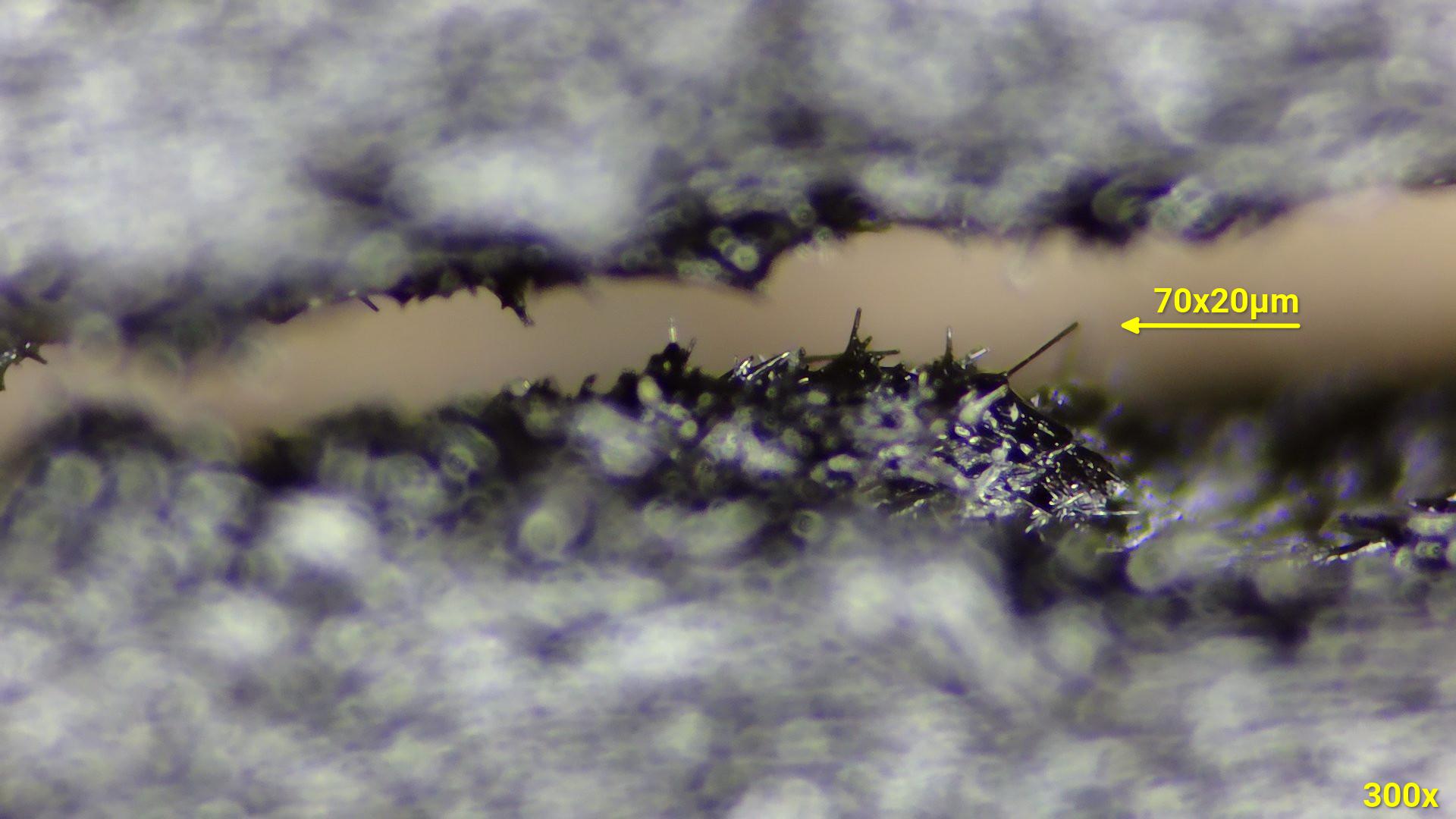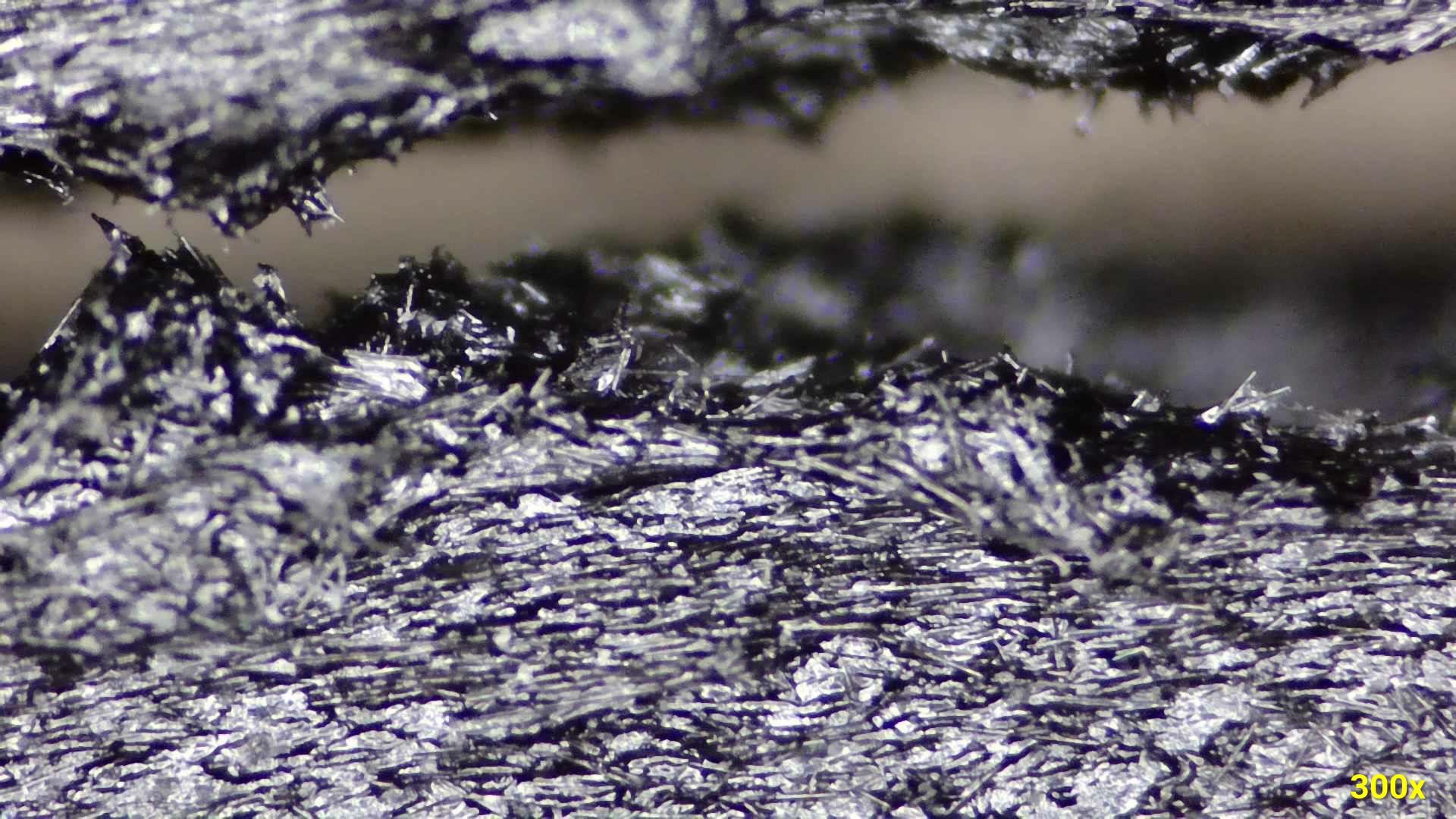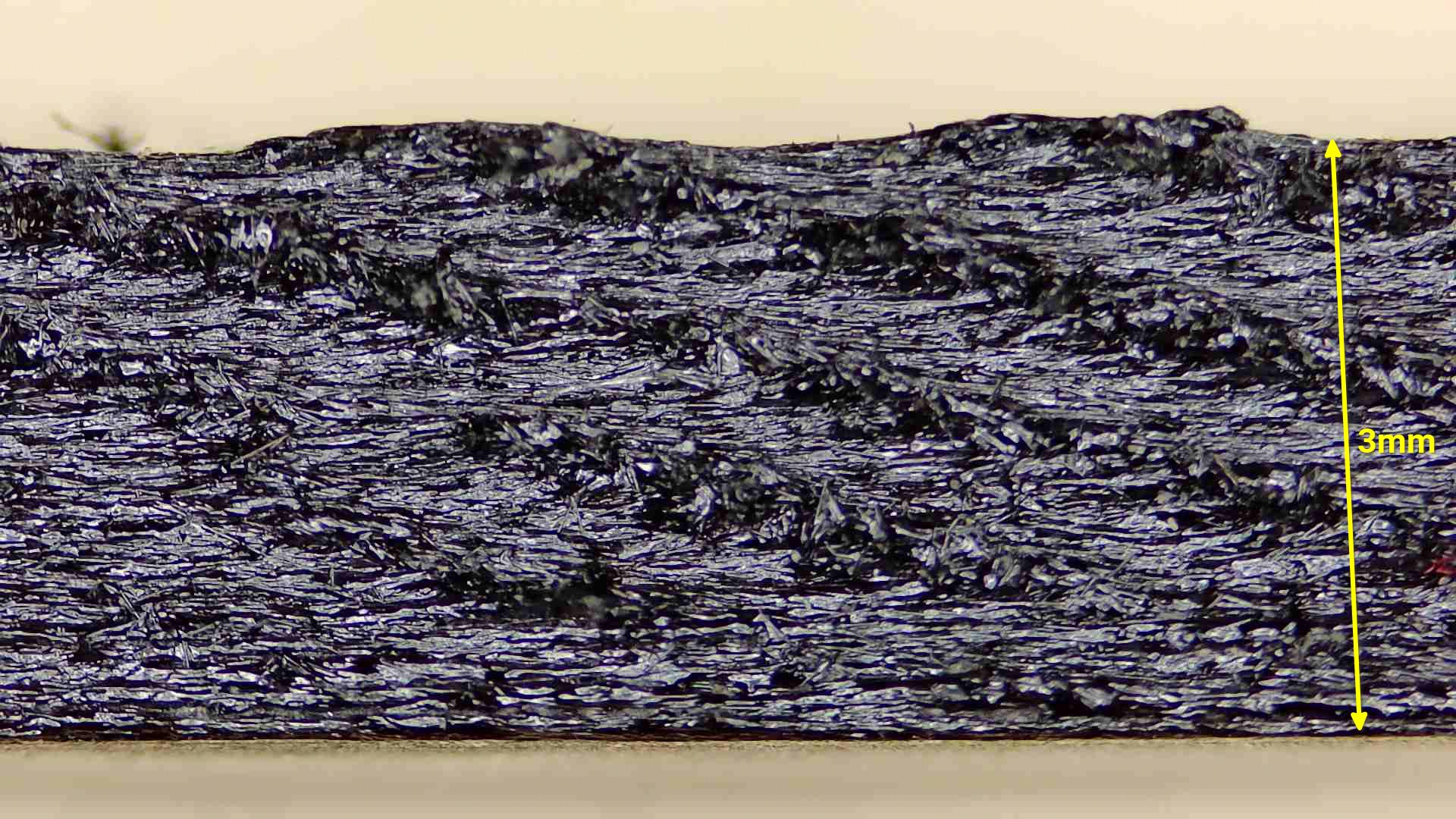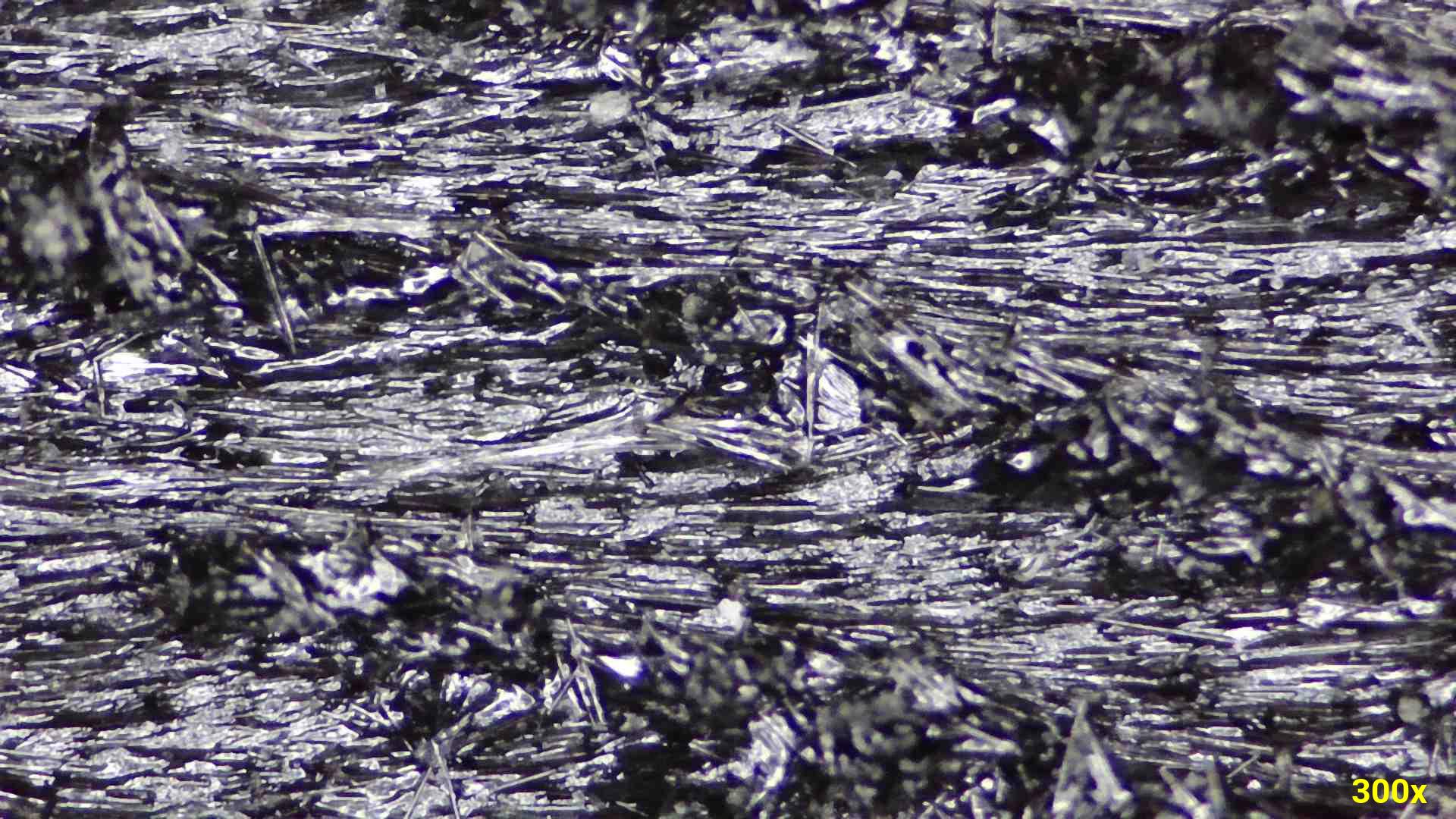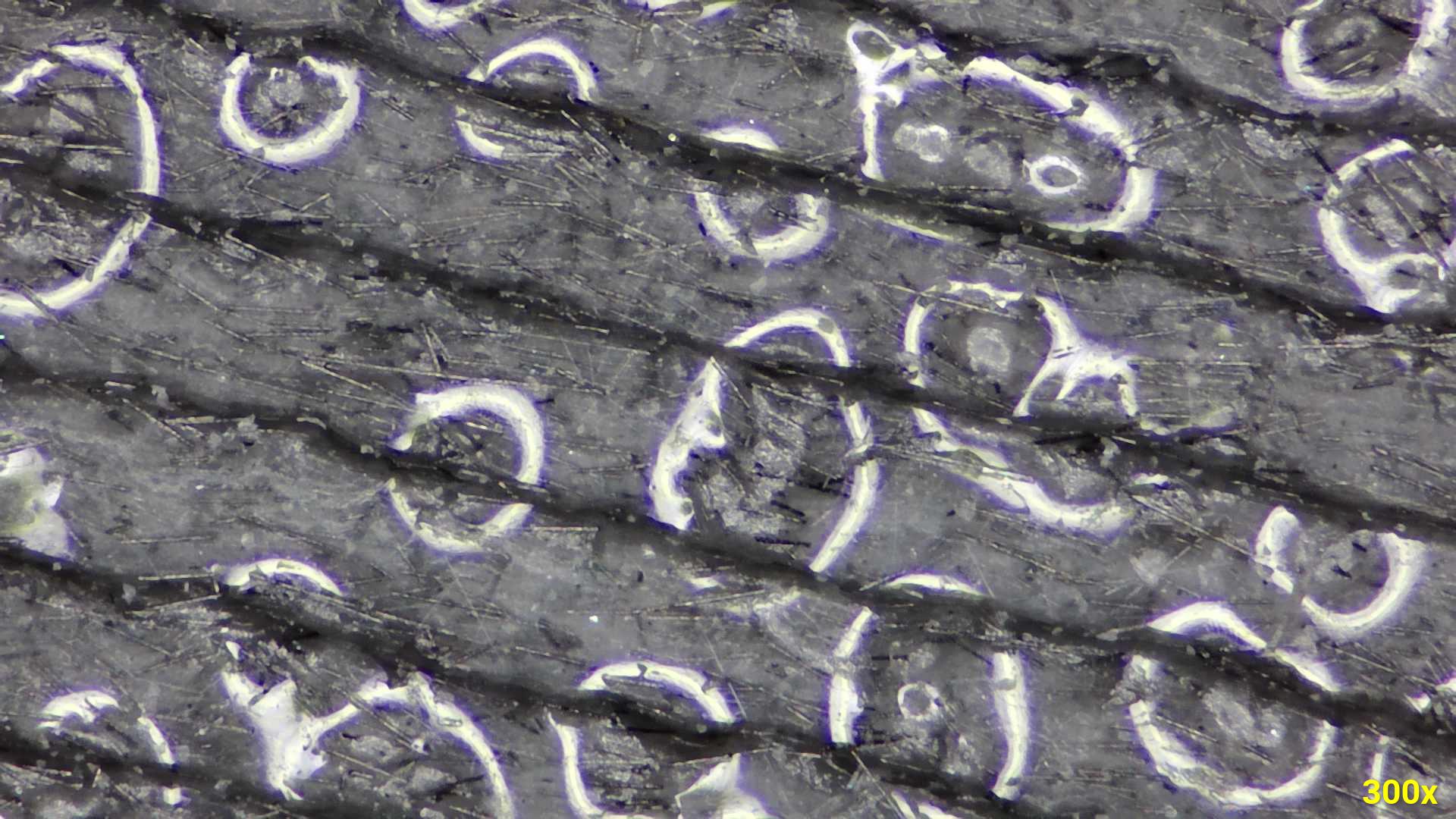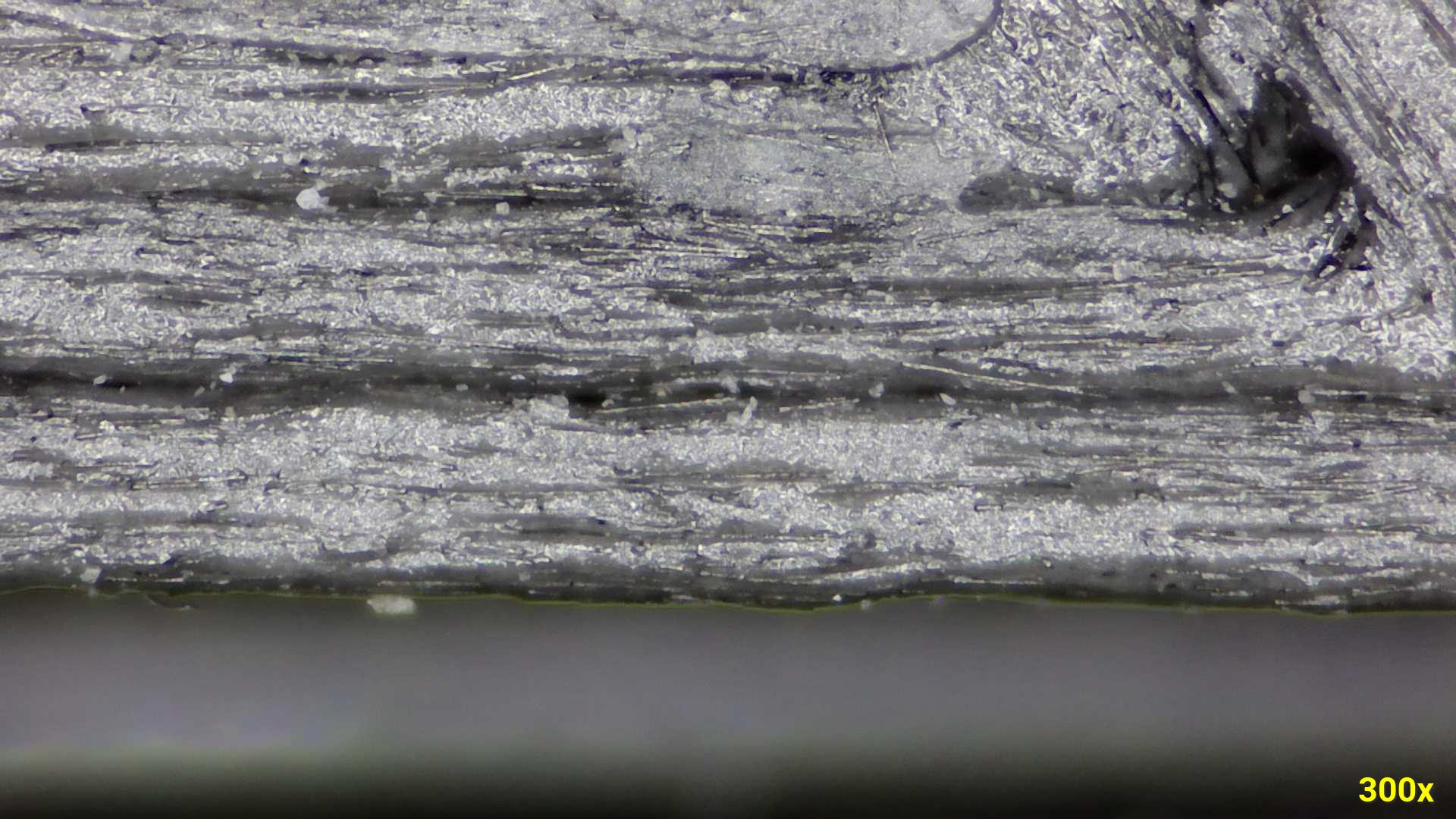2023-01-13: Carbon fibers in 3D-printing
On the safety of fiber-infused 3D printed objects
Contents
As a 3D-printer enthusiast I’m actively experimenting with every conceivable material that I can feed through the printer. Carbon-infused materials are attractive for both their mechanical properties and resulting aesthetics. Yet, every time I print a CF-infused material and later manipulate the resulting object I can feel an unpleasant tingling sensation on my fingertips for hours.
I always suspected this had to do with the fibers themselves, but none of the other makers I discussed with ever experienced this effect. While working on another project with a microscope I decided to examine two 3D-printed parts I had at hand and confirm my suspicion.
I’m sharing the pictures below, along with some reflections. Each image is clickable and can be seen at full resolution without annotations.
Sample #1: PA-CF
Sample #1 is a flat slab, 3mm in height, with two thin slots through its length. It was printed with some wet PA12 (very porous results). I have no information about fiber loading, diameter or length.
From observation, it contains no less than 30% of fibers by volume, each fiber having a diameter of ~20µm. The average fiber length is impossible to determine from this sample due to the excellent fiber bonding and strong turbulence (a result of fast extrusion). Length looks randomly distributed with fibers as short as 50µm and a measured maximum of about 100µm.
Top surface
The first image shows the top surface. The two rectangles show the approximate position of the zoom locations.
There is a big difference between bottom, top, internal and external faces.
The top surface is scraped by the nozzle and shows a general alignment of the fibers towards the direction of the extrusion. There is next to zero fiber protrusion (see the side images for reference).
The sides however are a completely different story: as the material is squeezed the fibers tend to exit the viscous boundary of the melt.
You can notice a big difference between the external and internal sides as highlighted in the rectangle: the internal sides look much more jagged with needles protruding, whereas the external sides are relatively clean.
Focusing below the top surface we can see a glimpse of the raw surface finish after printing:
At these scales the focus plane is pretty narrow: most of the face is out of focus as the sample is actually wavy in every direction (top surface included) due to printer vibrating while extruding.
The black, highly reflective nature of the material also doesn’t make it easy to get a good picture.
External side surface
Here the same sample was held vertical and we’re looking at the external, weathered side.
We can see several severed fibers lodged in-between layers. Most protruding fibers have been broken and have fallen off.
Sample #2: PLA-CF
The second sample is printed with a modified PLA. The data-sheet only claims “10% fiber loading”. Fiber diameter and length is unspecified but from observation the average full fiber length is about 200µm with a diameter of ~10µm: visibly thinner in comparison to the previous sample.
This object has also been used for several months, so all external surfaces have been used/weathered. There are no slots in this sample to take a look at, however it’s still great to compare the completely different fiber size and disposition.
Bottom surface
Printed on a textured sheet, the bottom surface looks rough and matte to the naked eye. Here under the scope the space in-between the dimples is completely smooth and shows the reflection of the ring light.
The fibers show very little signs of bonding with PLA, they mostly look just “embedded”. Contrarily to the previous sample, the fiber length is pretty consistent.
Top surface
As a casual observation, it’s impressive to see how fibers of such length survive the extrusion unscathed. All exposed fibers in this image are 150µm or longer.
A safety concern
Contrarily to injection molding where all fibers are fully embedded thanks to the bounded volume of the mold, with 3D printing you can have fibers partially exposed.
The fibers will mostly align with the direction of the extrusion flow, except at the boundaries of the volume where they are allowed to protrude. All protruding fibers will eventually break and flake off.
The exposed fiber length is random and should probably be considered at the very minimum an irritant.
Makers are normally aware that CF/GF materials needs to be treated with protection equipment when cut for this reason.
What is new here is that the resulting printed object (not just the process itself) might still need to be handled with care. This shouldn’t probably be a concern for anyone receiving a single 3D-printed CF part, but could be for those that work daily with such objects.
